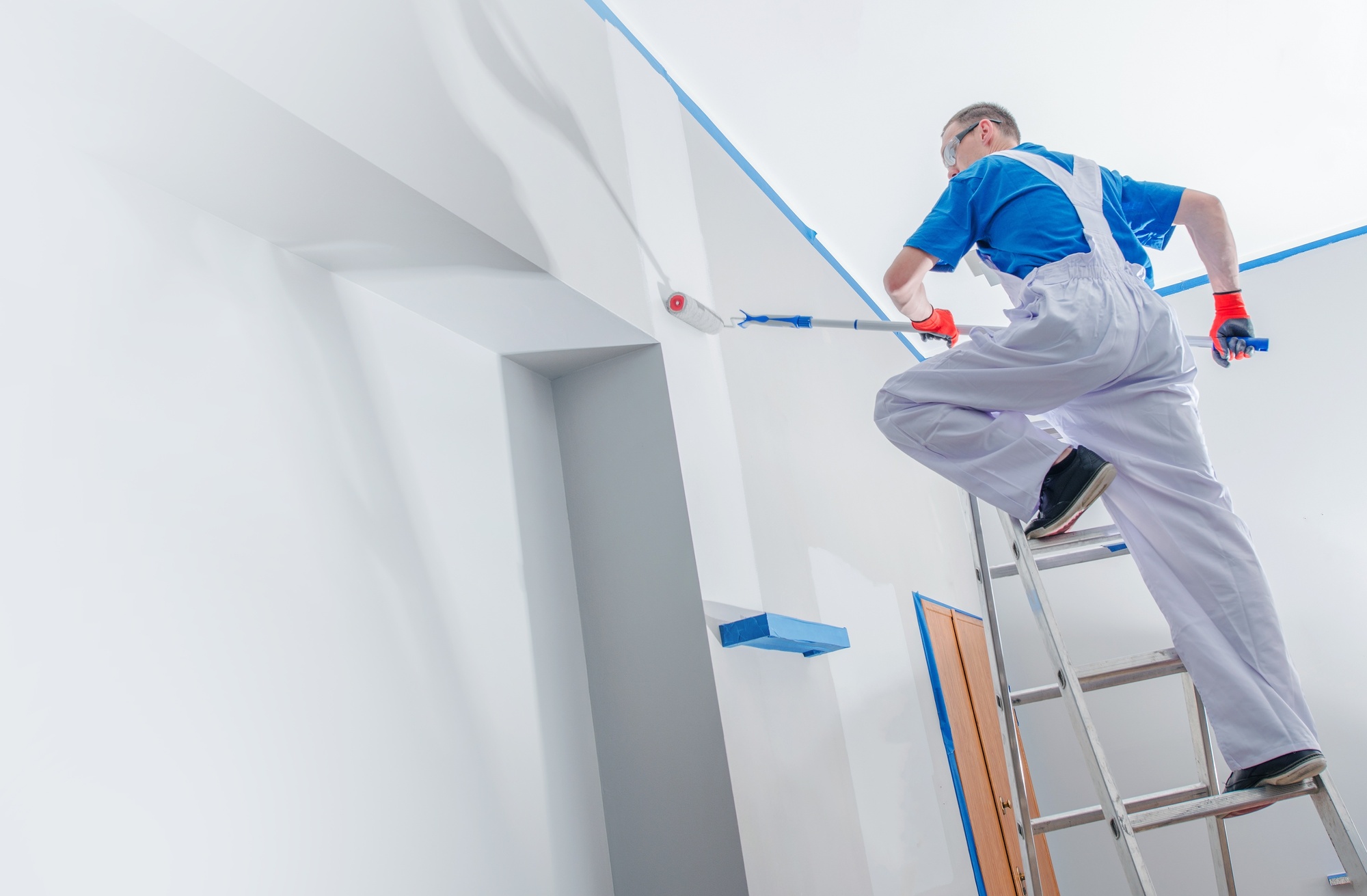Preparation
When painting your home, it is a good idea that the job be carried out accurately to achieve an aesthetically pleasing yet weatherproof finish – thus, professionals should take care of this job. However, if that’s not in your budget, here’s what you can do:
Now there are numerous factors to keep in mind before beginning painting a surface; choosing colors for exterior and interior walls as well as prepping surfaces before you begin is all part of this process. If this process is foreign to you, professional services are highly recommended to guarantee lasting durability of both sides of the wall.
Prep work is key when it comes to outdoor painting projects (https://www.chicagotribune.com/news/ct-xpm-2001-06-22-0106220046-story.html). Washing alone won’t do; loose paint must also be scraped off if possible to ensure an even and uniform surface for painting. Spackling compounds may also help protect new coats from chipping or peeling in future years.
Cover all surfaces not being painted, such as landscaping, windows and doors with plastic sheeting for quality painting contractors; alternatively you could cover them yourself using tarps or plastic covers to keep surfaces from getting dirty while painting. It is wise to put some type of protection over furniture like tables and chairs when doing your own project to prevent accidental drips of paint on them while painting is being completed.
As well as covering any non-painted surfaces, painters will also typically clean all surfaces they are working on before applying paint. This could involve power washing or simply using detergent and water to scrub down and scrub away dirt or other debris that could interfere with their final product. In any event, it’s recommended that surfaces be completely dry prior to painting as moisture can cause the new coat of paint to blister or not adhere correctly.
As part of your preparation, it is also a good idea to review all the supplies necessary for your job. Doing this will allow you to ensure you have everything on hand and prevent you from running back and forth to stores for supplies.
Primer
Primers are essential when painting both the interior and exterior of your house, providing the first coat of paint on walls while sealing them with smooth surface sealers and creating an ideal buffer layer that enables subsequent layers of paint to adhere more easily and last longer. Unfortunately, many homeowners become confused as to when it is appropriate or necessary.
Many professional painters advise using a high-quality primer in your home as this will ensure a lasting and beautiful paint job. Using primer may reduce the number of coats necessary to get full coverage more quickly – saving both time and money in the process. Choosing an appropriate primer depends on factors like humidity or moisture conditions in your area of painting.
If you are painting over existing paint that is in good condition, a primer coat isn’t usually necessary. Many modern quality exterior and interior paints are “self-priming,” meaning that they adhere directly to most bare or previously painted surfaces without first needing to be primed first.
Your house surfaces that will experience frequent wear and tear may benefit from stain blocking primer. These types of primers are specially formulated to stop solvent-based stains like crayon, grease and ink from penetrating the surface and showing through paint – and are available in both water-based and low VOC (volatile organic compound) formulations.
Paint
Not only is color and sheen of paint important, but so too are its resins. Interior painting tends to use water-based emulsion and acrylic latex coatings while exteriors typically use oil-based ones; water-based ones contain less volatile organic compounds (VOCs) that contribute to depleting our atmosphere of ozone layers than oil-based counterparts and hence produce less emissions of harmful VOCs into the atmosphere.
Exterior paints must withstand sunlight, rain and snow conditions in order to survive, meaning that moisture-wicking capabilities, UV radiation resistance and fungal growth must all be factored into their design. Premium brands have higher durability levels which could last twice as long before cracking and fading occurs compared to lower-quality brands.
Finish
Hiring a professional interior and exterior painting contractor when renovating your house is important to getting a high-quality finish and saving both time and trouble. You can visit Brothers Colors Painting of Tampa, FL for a reputable company that will also offer options tailored specifically for your home’s style. This includes things such as low or no VOC paints that contain less volatile organic compounds which could pose respiratory or health risks.
Interior paints are composed of various materials like vinyl, acrylic and epoxy; some contain natural oil-based compounds while others use water-based formulations. Interior paints can be found in living rooms, dining rooms, kitchens and bathrooms and typically come in matte, satin eggshell or glossy versions that make cleaning easy while being resistant to mildew growth.
Selecting the perfect paint can be daunting with so many shades to consider. Before making your decision, take into account your home size and amount of natural lighting before consulting a color expert for advice.




